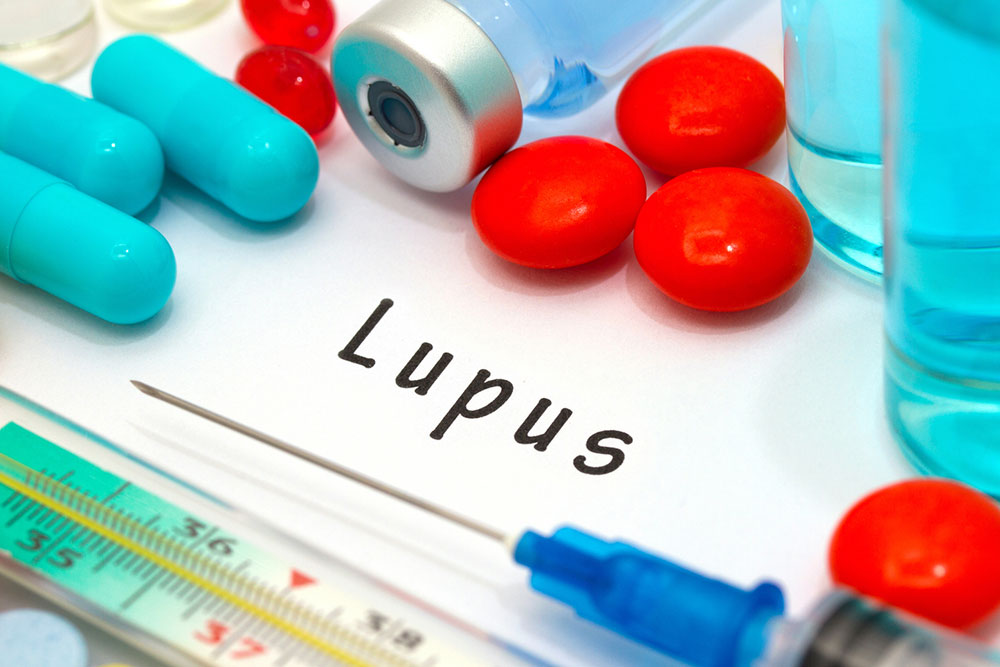9 Early Signs and Symptoms of Lupus
Lupus is a chronic autoimmune disease that currently affects around 5 million people in the world, out of which 1.5 million are in the people in the country with more than 16,000 cases being reported every year. This disease occurs when the immune system of the body can’t differentiate between the healthy tissues and harmful germs, leading to the creation of antibodies that attack healthy cells and tissues. Although the cause of the lupus is still unknown, research suggests that genes play an important role in the development of lupus symptoms in women as well in men.
Lupus affects everyone differently and usually starts in early adulthood, anywhere between the teen years and the 30s.

Fatigue
Almost 90 percent of people with lupus experience some level of fatigue. An afternoon nap can help fight people to deal with fatigue, but sleeping too much during the daytime can sometimes lead to insomnia at night. On the other hand, if you want to keep your energy levels high, then sticking to a daily routine and remaining active can be effective.
Unexplained Fever
An unexpected low-grade fever with no apparent reason is one of the early lupus symptoms. During this time, the body temperature may vary between 98.5 and 101 degrees Fahrenheit. This type of unexplained fever associated with lupus disease could be due to an inflammation, infection, or imminent flare-up which has a nature of frequent occurrences. However, if you are experiencing recurrent low-grade fevers, then making an appointment with a doctor is advisable.
Hair Loss
Hair loss or thinning of hair could be the result of inflammation of the skin and the scalp, which is often considered to be one of the early lupus symptoms. Some people with lupus also experience thinning of the beard, eyebrows, eyelashes, and other body hair and also can turn the hair quality brittle and rugged. Lupus treatment usually results in a renewed hair growth but sometimes the hair loss is permanent if you develop lesions on your scalp.
Skin Rash
One of the most visible symptoms of lupus disease is a butterfly-shaped rash that appears on the bridge of the nose and both the cheeks which accounts for almost more than 50 percent of the people with lupus. Lupus can also cause non-itchy lesions in different parts of the body making their skin sensitive to the sun or even artificial lighting while some also experience discoloration in finger and toes.
Pulmonary Issues
Inflammation of the pulmonary system can be possible early lupus symptoms that make the lungs become inflamed. The swelling can extend to the lung blood vessels and even the diaphragm. All these conditions lead to chest pain during the breathing process and are commonly referred to as pleuritic chest pain. Over time, if lupus is not treated properly, it can shrink the lung size which can result in chest pain and shortness of breath.
Kidney Inflammation
People suffering from lupus can develop a kidney inflammation commonly known as nephritis, which can make it hard for the kidney to filter out the toxins and wastes from the blood. Some of the common symptoms related to nephritis are as follows:
- Swelling in the legs and feet
- High blood pressure
- Blood in urine
- Darker urine color
- Very frequent urination especially at night
- Pain on one side of the stomach
Early symptoms may go unnoticed and if not treated properly can lead to end-stage renal disease.
Swollen Painful Joints
Inflammation can cause pain, stiffness, and swelling in the joints, particularly in the morning which may come and go often. The early lupus symptoms associated with swollen painful joints may be mild at first but gradually they turn severe. Sometimes, over-the-counter medications work well, but if the problem still persists, then seeking medical guidance is recommended
Gastrointestinal Problems
Gastrointestinal issues such as heartburn and acid reflux are considered to one of the most common early lupus symptoms. Mild symptoms associated with gastrointestinal problems can be treated with medicines available over the counter, but more frequent and severe bouts of acid reflux and heartburn can only be treated with diet maintenance such as avoiding meal skipping, cutting down meal intake, and avoiding caffeine-rich beverages.
Thyroid Problems
It’s very common for people with lupus to develop certain thyroid malfunctioning and problems. The thyroid is responsible for controlling the body’s metabolism and a poorly functioning thyroid can affect vital organs such as the brain, heart, kidneys, and liver. It can also lead to hair loss, weight gain or loss, dry skin, and mood swings.
Now that you know about the various early signs of lupus, consult a doctor as soon as possible, so that the treatment can be effective.

